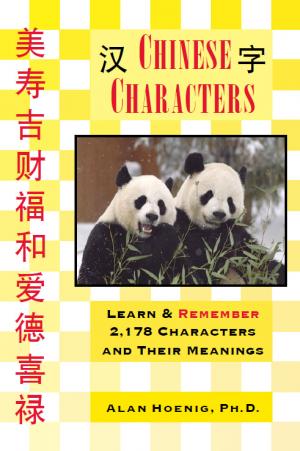Have you ever had a conversation with a three year old? Though their grammar might not be perfect, you can usually maintain a pretty thorough conversation. Experts say that the average three year old only has a vocabulary of around 500-1,200 words. If you knew how to read, write, and say that many Chinese words, your communication skills would be well past that of a three year old – we’d say that’s pretty good. Now, imagine you knew how to read, write, and say more than 2,000 words; you’d be able to navigate your way around an average Chinese city and hold chitchat conversations with strangers at length. Sound like a good way to jumpstart your Chinese? Then consider using Chinese Characters: Learn & Remember 2178 Characters and Their Meanings by Alan Hoenig.
"Imagine you knew how to read, write, and say more than 2,000 words; you’d be able to navigate your way around an average Chinese city and hold chitchat conversations with strangers at length."
At 508 pages, this book isn’t for the faint of heart. It’s not a quick fix to learning a language; it will take perseverance and dedication to master the 2178 Chinese characters presented in this book. But don’t worry; if you give it the time and focus required this book really will bring you to new language heights.
The book presents the words not in alphabetical order, but rather organizes them by visual similarity. For example, the word “kind” is three horizontal lines divided by one vertical line in the middle. So is the word plentiful, only the placement of the vertical lines is different. Thus, these words appear in the book near to one another. In the word “plentiful,” he explains that the vertical line extends past the horizontal lines to illustrate the king’s “abundance” or how he has “plentiful economics”. It may be a stretch, but for some of us these silly lines actually do work. The trick is to get to the point where you can just see the character and identify the word without the memory trigger. The memory trigger, however, does not help you to remember the pronunciation of the word in Chinese.
.png)
Because there is a total disconnect between the pronunciation and the character, it may be easy to remember the character and think, “Oh, that means King” using the English word in your head rather than thinking the Chinese word, “Wang” when you see it. Hoenig doesn’t really address this issue, which seems as though it could quickly become problematic for the student if he/she doesn’t devise his/her own tricks. However, that doesn’t take away from the overall usefulness of the book.
If you are a teacher of Chinese, then you may want to recommend Chinese Characters: Learn & Remember 2178 Characters and their Meanings to your students. Have your students practice the words at home and work on the pronunciation in class. You can also think of some fun games to use with your students. Overall, the book has a nice layout and memory concept that’s well worth looking into. See if the memory tricks work for you or your students. If they do, you’ll improve your Chinese skills in no time!




.png)